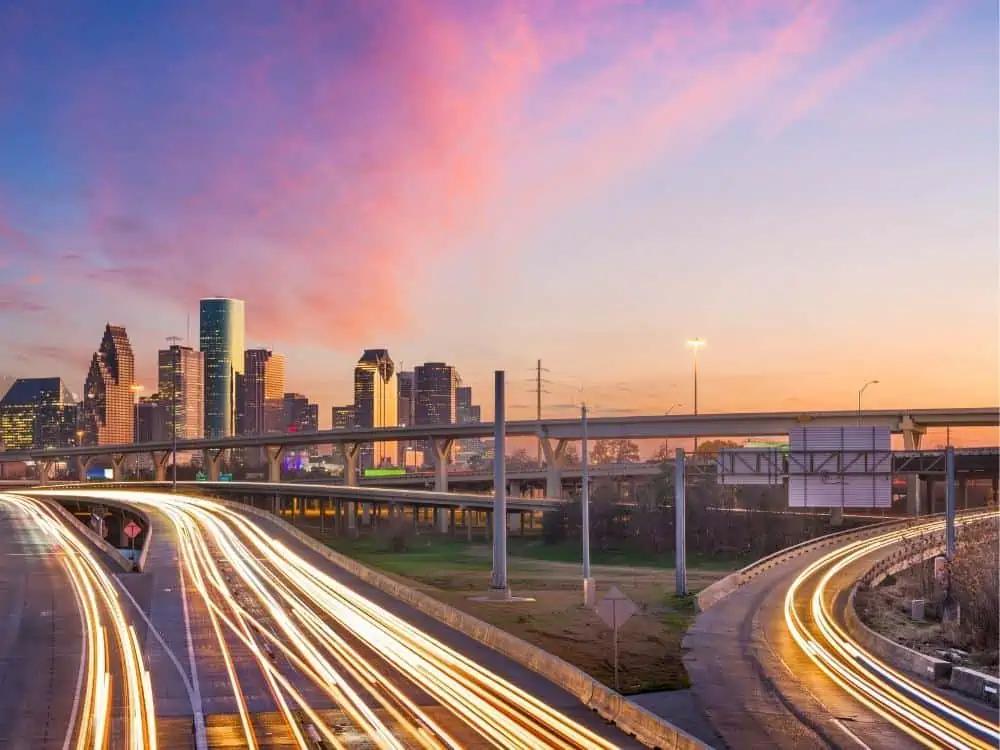Share the post "Using a PO Box on a Driver’s License in Texas"
Getting a driver’s license is one of the significant milestones in life. It can be essential for transportation in states with lots of land and big roads like Texas. A valid address is required, among other things, to get one, but what qualifies as a valid address? Could you use your PO box instead of your house? Let’s figure this out.
A PO box is not a valid address for a driver’s license, but there are ways to use an alternate address if you meet the additional requirements. You may also have to take extra steps to get your license, depending on the circumstances, including if you are a minor, a veteran, or a judge/spouse of a judge.

Proof of Driver’s License in Texas
There are several options for proof of residency when applying for a driver’s license. According to the Texas DMV, some of these documents include the following:
- A mortgage, a mortgage payment booklet or a monthly mortgage statement, a current deed, or a residential rental/lease agreement
- A valid Texas motor vehicle registration or title that is not expired
- A Selective Service card
- A high school report card or a college or university transcript from the current school year
- A Pre-printed paycheck or payment stub, with the date printed to show that it was within 90 days of the application date
Unfortunately, these documents must be linked to a home address and can’t be connected to a PO box, which means you cannot use a PO box to apply for a driver’s license in Texas.
Texas Driver’s License Requirements
To qualify for a driver’s license in Texas, you will need:
- Proof of US citizenship
- Proof of Texas residency proving you have been a resident for at least 30 days
- Social security number
- An official form of identification, such as a birth certificate.
Suppose you are coming from out of state and are surrendering your driver’s license in exchange for a new one. In that case, you must provide evidence of current Texas Vehicle Registration and proof of insurance for each vehicle you own.
Residency Waive Options
It is possible to get the residency requirement waived if you are given authority to use a different address, which only happens under these specific situations:
- If you are subject to the Texas Attorney General-administered Address Confidentiality Program (ACP).
- If you are a judge or a judge’s spouse.
- If you are an active-duty military member, your spouse and dependents may provide a residency address not in Texas.
- If you are incarcerated in a Texas penal institution.
- If you are a minor in the Department of Family Protective Services conservatorship.
- If you are the age of 21 and in foster care under the Department of Family Protective Services.
- If you are considered a homeless youth according to 42 USC Section 11434a.
Please note that peace offers must prove Texas residency to show that their mailing addresses meet Texas residency requirements.

Additional Driver’s License Requirements
There are several circumstances in which you would have to complete additional requirements to receive your license or other paperwork that you may need.
They are shown in the table below:
| Applicant | Requirements |
| New Texas Residents | Complete a driver’s education course, then acquire your learner’s permit. Get through the Graduated Driver License Program with your Learner License, followed by your Professional Driver License. Once you pass the driver’s test, you will get a temporary license for 30 days. The official license will get mailed to you as a replacement within that time. |
| Teen Driver Applicants (Under 18 years old) | Complete a driver’s education course, then acquire your learner’s permit. Get through the Graduated Driver License Program with your Learner License, followed by your Professional Driver License. Once you pass the driver’s test, you will get a temporary license for 30 days. The official permit will get mailed to you as a replacement within that time. |
| Temporary Visitors and Foreign Students | Must present additional documents to verify U.S. citizenship or lawful presence in the country. You then have to meet all other standard driver’s license requirements. |
| Motorcycle Applicants | If you can verify your disability and discharge status, your fees may be waived when obtaining your license, which also applies to eligibility for veteran designation. You must also meet the standard requirements to receive your license. |
| U.S. Military Veterans | If you are in the ACP and would like to use your substitute address on your license, you must apply for an address change, schedule an appointment to visit the DMV, show them your ACP card and completed application, and pay the application fee. |
| Address Confidentiality Program | If you are in the ACP and would like to use your substitute address on your license, you must apply for an address change, schedule an appointment to visit the DMV, show them your ACP card and the application you completed, and pay the application fee. |
Why Can’t I Use My PO Box for My Driver’s License?
You can’t use PO boxes for driver’s licenses because they are mailing addresses. The issue with this is that similar to billing addresses, they aren’t physical addresses. Physical addresses are linked to an actual place. Some examples of these are the following:
- Home address
- School address
- Work/office address
On the other hand, a mailing address is simply one that you can use for postal mail and specific parcels. Physical addresses can be mailing addresses as well, but it doesn’t make it automatically the same thing.

How to Change Your Address on Your Driver’s License in Texas
Changing your driver’s license address in Texas is a straightforward process that can be completed online, in person, or by mail. Here is a step-by-step guide for each method:
Online Method
- Eligibility:
- You must have a valid Texas driver’s license or ID card.
- Your new address must be within Texas.
- Visit the Texas DPS Website:
- Access the Online Services:
- Select the option for “Address Change”.
- Verification Process:
- Verify your identity by providing the requested information, such as your driver’s license number and date of birth.
- Enter New Address:
- Input your new address details.
- Payment:
- Pay the applicable fee using a credit or debit card.
- Confirmation:
- Upon completion, you’ll receive a confirmation. Your new license with the updated address will be mailed to you.
In-Person Method
- Locate a DPS Office:
- Find your nearest Texas DPS office.
- Visit the Office:
- No appointment is required for an address change, but you may schedule one to expedite the process.
- Complete the Application Form:
- Fill out the “Change of Address” form at the DPS office.
- Provide Identification:
- Present your current driver’s license and proof of your new address.
- Payment:
- Pay the necessary fee.
- Receive a Temporary License:
- You’ll receive a temporary license on the spot. Your new license will be mailed to you.
By Mail Method
- Download and Complete Form:
- Download the Change of Address form (DL-64) from the Texas DPS website.
- Include Documentation:
- Attach a photocopy of your current driver’s license and proof of your new address.
- Mail the Form:
- Send the completed form and attachments to the address provided on the form.
- Wait for the New License:
- Your new license with the updated address will be mailed to you.
Additional Information
- Timeframe: It’s important to update your address within 30 days of moving.
- Fees: Fees vary; check the DPS fees page for current rates.
- Contact DPS for Assistance:
- If you need help or have questions, contact DPS Customer Service at (512) 424-2600.
Remember to update your vehicle registration address separately, which can also be done online through the Texas DMV website.

Requirements for Getting a Driver’s License in Texas
Getting a driver’s license in Texas involves meeting specific requirements and following a series of steps. These requirements can vary slightly depending on the applicant’s age. Below is a general overview of the process for both teens and adults:
For Teen Drivers (Under 18)
- Complete a Driver’s Education Course:
- Enroll in and complete a state-approved driver’s education course. There are options for parent-taught, online, or classroom courses.
- Obtain a Learner License (Instruction Permit):
- After completing the first module of driver’s education, apply for a learner license at a Texas DPS office.
- Provide proof of identity, Social Security number, and Texas residency.
- Pass the knowledge test, vision exam, and provide a thumbprint.
- Have a parent or guardian co-sign the application (if under 18).
- Pay the required fee.
- Practice Driving:
- Accumulate behind-the-wheel experience with a qualified adult (21 years or older) who holds a valid driver’s license.
- Hold the Learner License for a Minimum Period:
- For teens 16-17, hold the learner license for at least six months.
- Pass the Driving Skills Test:
- Schedule and pass the driving skills test at a DPS office or a third-party provider.
- Bring a vehicle for the test, along with proof of insurance and registration.
- Receive a Provisional Driver’s License:
- Upon passing the skills test, receive a provisional license, which has certain restrictions until the age of 18.
For Adult Drivers (18 and Older)
- Complete Adult Driver Education (Optional for 18-24):
- If you are between 18 and 24, complete a six-hour adult driver education course, either in a classroom or online.
- Adults 25 and older can choose to take this course for preparation but it’s not mandatory.
- Apply in Person at a DPS Office:
- Provide proof of identity, Social Security number, and Texas residency.
- Complete the application form.
- Pass the knowledge and vision tests.
- Pass the Driving Skills Test:
- Schedule and pass the driving skills test.
- Bring a vehicle for the test, along with proof of insurance and registration.
- Receive Your Driver’s License:
- After passing the skills test, pay the required fee to receive your Texas driver’s license.
General Requirements for All Applicants
- Documentation: Proof of identity, Social Security number, U.S. citizenship (or evidence of lawful presence), and Texas residency.
- Fees: Check the DPS fees page for current rates.
- DPS Office Locations: Find your nearest office on the Texas DPS website.
Additional Notes
- Impact Texas Drivers Program: Teens and young adults are required to complete the ITD program, which focuses on safe driving and the dangers of distracted driving.
- Restrictions: The provisional license for teens has curfew and passenger restrictions.
For more specific information, always refer to the Texas DPS website or contact them directly.
PO Box FAQ
Here are a few commonly asked questions regarding using a PO box on a driver’s license in Texas.
Is Texas the only state where you can’t use a PO box?
Unfortunately, you can’t use a PO box for your driver’s license in any state. You can use a PO box as a supplementary address but not as the only address on file. The requirement for a physical address remains steady in all the states.
What are the physical addresses I can use for my driver’s license?
A home address or an address where you have residency is the only one you can use for your driver’s license. You have to be able to prove residency at the address using other documents.
References;
Share the post "Using a PO Box on a Driver’s License in Texas"
Christian Linden is a seasoned writer and contributor at Texas View, specializing in topics that resonate with the Texan community. With over a decade of experience in journalism, Christian brings a wealth of knowledge in local politics, culture, and lifestyle. He holds a Bachelor's degree in Communications from the University of Texas. When he's not writing, Christian enjoys spending weekends traveling across Texas with his family, exploring everything from bustling cities to serene landscapes.











